The Great Exhibition of 1851 - printed items
The opening of the Great Exhibition of the Works of Industry of All Nations at Hyde Park on 1 May 1851 saw a Summer of visitors attracted to the display of items in the Crystal Palace. As a result, many printed items were produced, some as souvenirs, some as information for visitors and some which used the exhibition as a promotional opportunity. Sharon Tuff takes a look at those held by London Metropolitan Archives.
From the beginning the Illustrated London News (ILN) reported the discussions and developments around the proposed exhibition and contained reports on the progress of the project and plans of the building from mid-1850. The ILN was established as an illustrated weekly publication, first appearing on Saturday 14 May 1842, which reported on world events as well as London news, and many articles were accompanied by illustrations and later photographs. In the weeks following the opening, the ILN produced a number of exhibition supplements which described and illustrated the different courts (or stands).
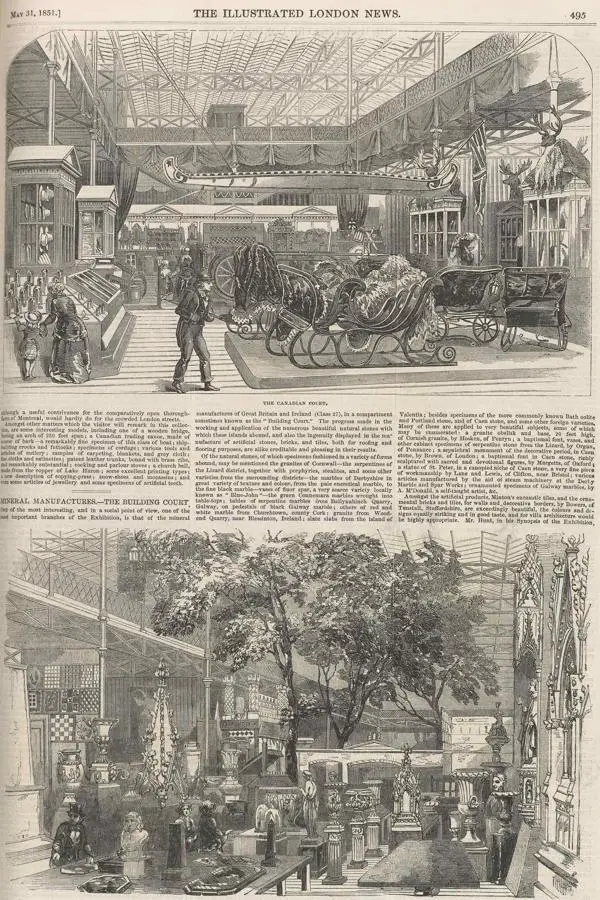
The individual items displayed were also described in some detail and many were illustrated within the pages of the ILN.
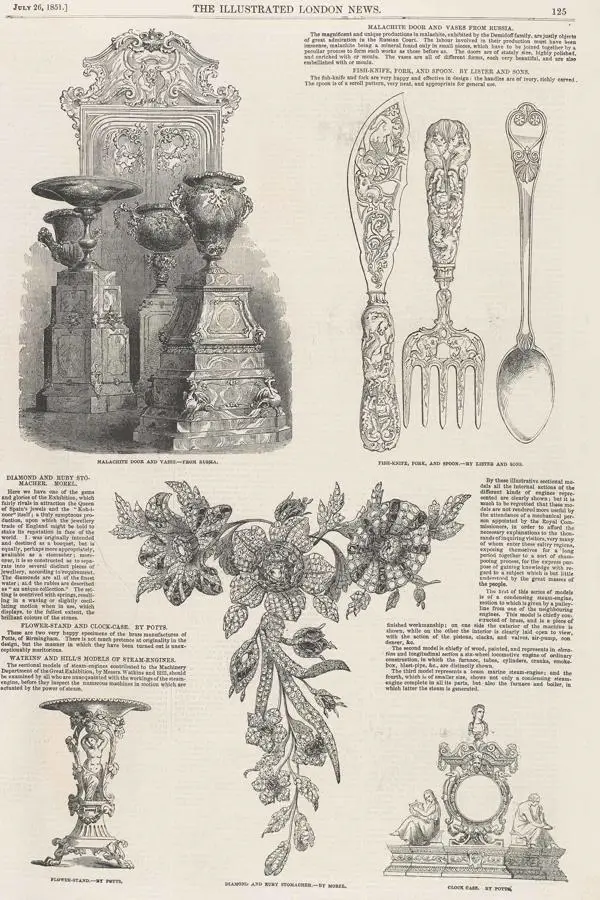
Like events of today, the Great Exhibition was accompanied by catalogues and plans. A copy of The official descriptive and Illustrated catalogue of the Great Exhibition of the Works of Industry of All Nations, 1851 (3rd edition) can be found in LMA’s Library (store 35.8) and cheaper guides were produced during the year. A plan of the building produced by Standidge & Co carefully located the individual courts (stands) and some of the exhibit highlights, for example, the Queen’s jewel case and a state bed in fancy needlework. The plan shows the arrangement of the courts with a large part of the western section allocated to Britain and its colonies and dependencies and the eastern half largely taken up by other countries.
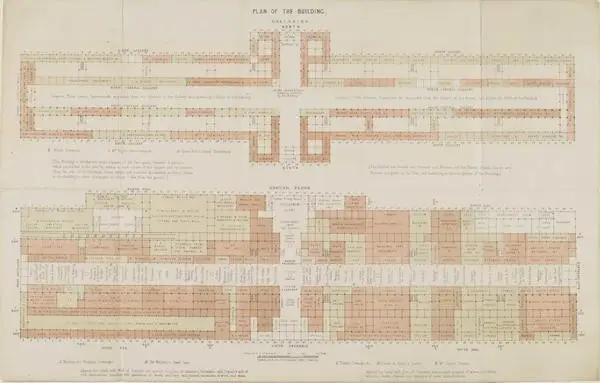
Paper peepshows or telescopic views proved popular souvenirs. They first appeared in England in 1825 and were popularised by the construction of the Thames Tunnel between 1825 and 1843. LMA has a couple of peepshows of the Great Exhibition: Telescopic view of the Great Exhibition was printed by C Moody, 1851; and Forbes's telescopic view of the ceremony of Her Majesty opening the Great Exhibition ..., designed by Bailey Rawlins, 1857. The Forbes panorama has been repurposed by the addition of Forbes labels in two places on the front obscuring references to T Lane and C A Lane, the maker and publisher
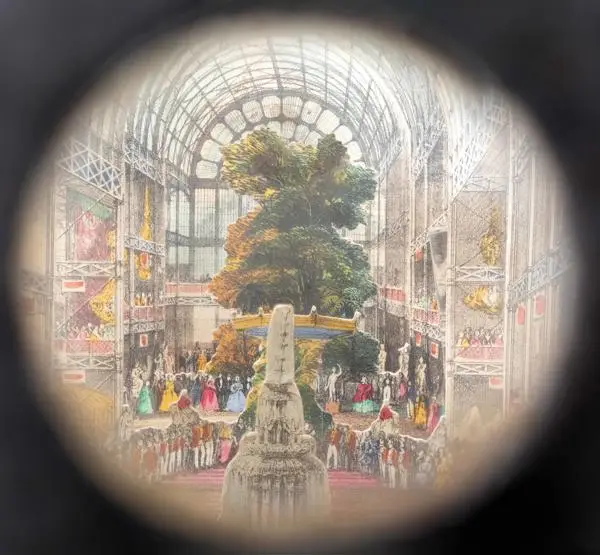
Maps were also potential souvenirs and an example is Tallis’ Illustrated plan of London and its environs in commemoration of the Great Exhibition of Industry of All Nations, 1851. The map, which locates the Crystal Palace as the Exhibition of Industry, is bordered by 49 colour views of principal buildings, including the Crystal Palace, drawn and engraved by J Rapkin.
The map was published by John Tallis & Co. as part of Tallis’s Illustrated atlas and modern history of the world and as a folded map.
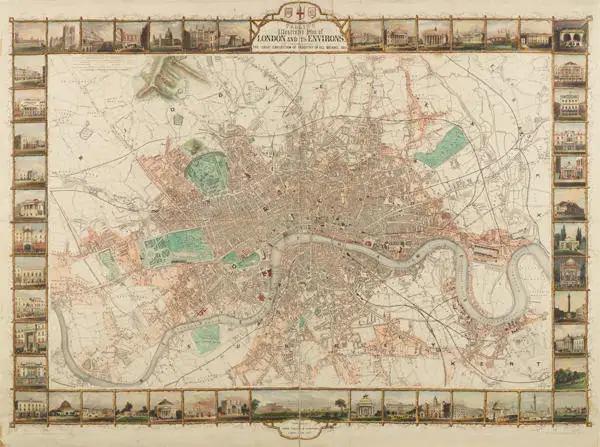
Other maps also used the Great Exhibition as part of their title, for example, Reynold's Map of London with the latest improvements cover is titled The Exhibition Map of London and Visitors Guide (SC/PM/LC/01/05/155). It includes some notes on the sights and amusements of London, a key to principal public buildings and a note on the Great Exhibition. The site of the building for the Great Exhibition in Hyde Park is marked.
Another example is Wyld's New Plan of London, published by James Wyld, 1851 with the cover title Wyld's Map of London and Visitor's Guide to the Great Exhibition 1851 (SC/GL/FLM/055/1851/k1287044).
The ILN produced a grand panorama of the Great Exhibition as a black and white woodcut over a number of issues. Advertising of the views began in October 1851 with the first appearing as fold out pages in the issue of 22 November 1851. Many of the woodcuts are attributed to being taken from daguerreotypes by Richard Beard or Antoine Claudet, the leading daguerreotypists of the period.
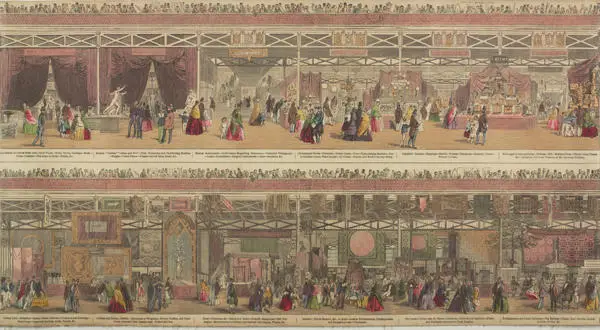
The grand panorama was also produced in colour and mounted on linen as two parallel views around the displays. It was rolled in a blue cloth wrapper with an embossed title and measures 279 x 559mm.
Musical items are also associated with the Great Exhibition. Cords of Harmony and Peace or Recollections of the Crystal Palace comprises 13 pages of music for the harp written by John Balser Chatterton, including Rule Britannia, a Prussian March and Neapolitan Melody. The cover dedicates the music to Victoria Paxton, daughter of Joseph Paxton, and includes an illustration of the Crystal Palace by Augustus Butler.
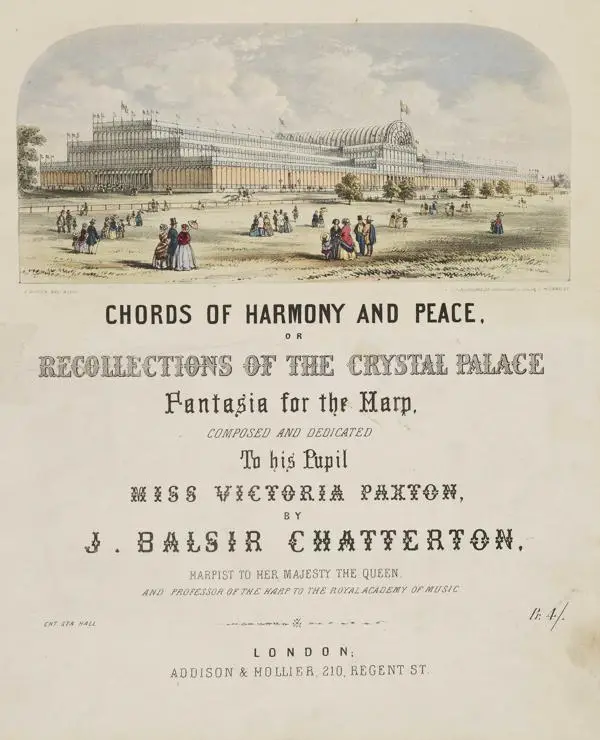
Images on the London Picture Archive
Many images of the Great Exhibition at the Crystal Palace in Hyde Park can be found on the London Picture Archive.